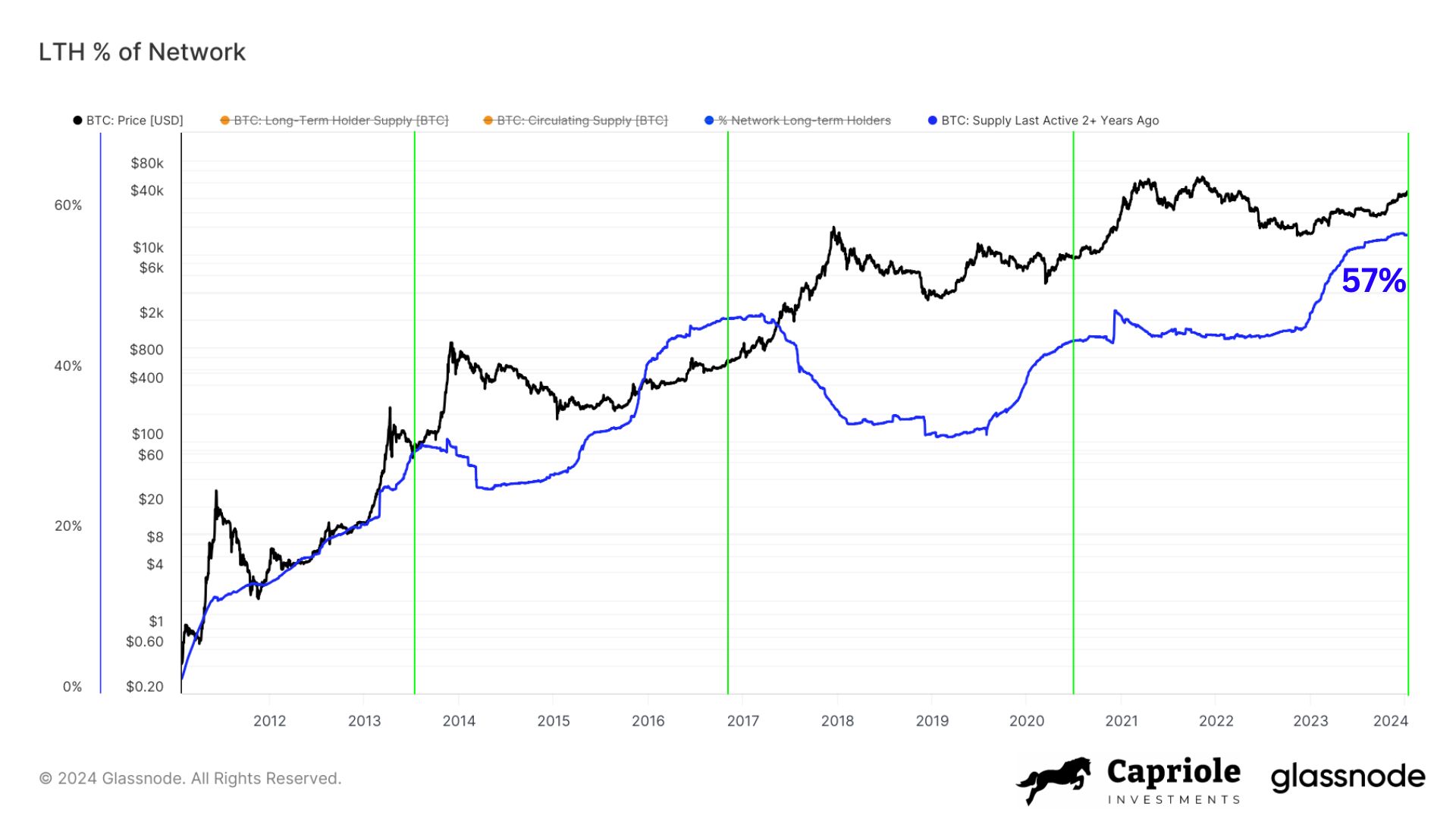The cryptocurrency market has been on a wild ride in recent years, with Bitcoin experiencing both boom and bust periods. However, one thing has remained relatively constant: a large portion of Bitcoin hasn’t moved in two years. This phenomenon, known as a “supply shock,” could have significant implications for the future of Bitcoin.

According to a recent report by Coin Metrics, 57% of all Bitcoin in circulation has not been moved in at least two years. This means that a significant portion of Bitcoin is being held by long-term investors who are not selling their holdings. This trend is likely due to a number of factors, including:
Increased institutional adoption: More and more institutional investors, such as hedge funds and pension funds, are starting to invest in Bitcoin. These investors tend to have a long-term investment horizon and are not looking to sell their Bitcoin anytime soon.
Growing belief in Bitcoin’s potential: As Bitcoin’s price has continued to rise over the years, more and more people have come to believe in its potential as a store of value and a hedge against inflation. This has led to increased demand for Bitcoin and a decrease in selling pressure.
Technical factors: The Bitcoin network is designed to become increasingly difficult to mine over time. This means that the supply of new Bitcoin is constantly decreasing, which can put upward pressure on the price.
The fact that such a large portion of Bitcoin is not moving could have a major impact on the market in the future. If these long-term holders decide to start selling their Bitcoin, it could lead to a significant increase in supply and a decrease in price. However, if they continue to hold their Bitcoin, it could lead to a supply shortage and a further increase in price.

The potential for a supply shock is one of the reasons why Bitcoin is such a volatile asset. The price of Bitcoin can be very sensitive to changes in supply and demand, and a sudden influx of selling or buying pressure could cause the price to swing wildly.
It is important to remember that Bitcoin is still a relatively young asset class, and its long-term prospects are uncertain. However, the fact that a large portion of Bitcoin is not moving is a sign that there is a significant amount of belief in its potential. This could bode well for the future of Bitcoin, but it is also important to be aware of the risks involved in investing in such a volatile asset.
